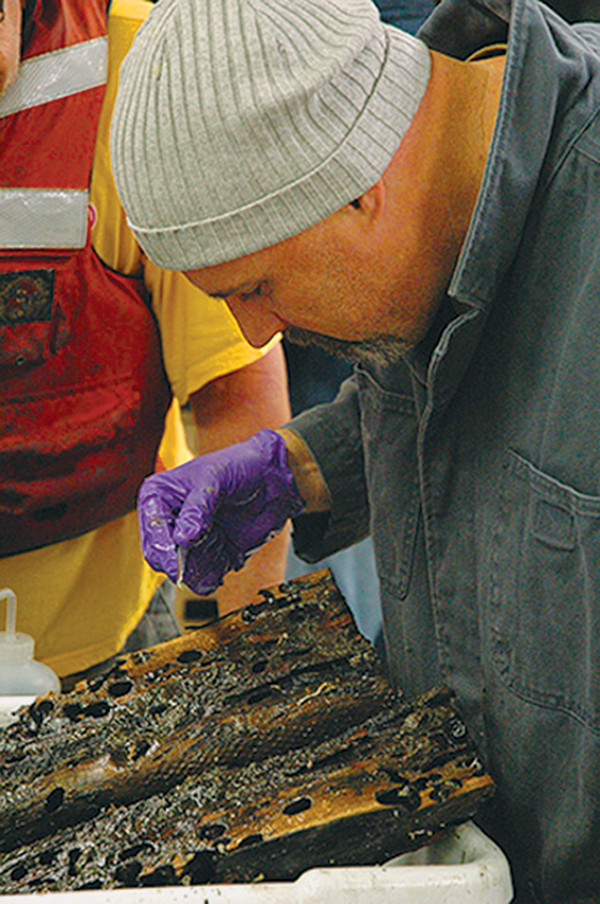
by Timothy Oleson Friday, August 8, 2014

Craig McClain examines a piece of wood retrieved after five years on the bottom of Monterey Canyon at a depth of 3,200 meters. The holes in the wood were made by boring clams. Credit: ©2013 MBARI.
Wood isn’t often on the menu for deep sea-dwelling critters, but for some species, there’s nothing like a tasty tree stump for dinner. Five years after leaving bundles of Acacia wood 3,200 meters deep at the bottom of Monterey Canyon off the central California coast, biologists retrieved the bundles with a remotely operated vehicle and found that some hosted diverse colonies of organisms.
The early birds to the wooden feasts were a species of clam (Xylophaga zierenbergi), which, like termites, are capable of boring through and digesting cellulose, reported Craig McClain of the National Evolutionary Synthesis Center in Durham, N.C., and James Barry of the Monterey Bay Aquarium Research Institute in Moss Landing, Calif., in a study published in Biology Letters. The holes created by the boring clams, as well as the clams’ feces and the clams themselves, offered shelter and food that appeared to attract a variety of other animals such as deep-sea snails and shrimp-like crustaceans called tanaids. McClain and Barry found that the duration over which a given portion of wood had been inhabited by the clams (judged by the prevalence of holes), along with the size of the logs, affected the diversity and types of animals present.
Strangely, however, despite the bundles being located close together, some remained totally uncolonized or had been only lightly colonized, suggesting “that the recruitment of larval clams into the wood fall was a nearly random process, even for logs that were just a few meters from one another,” McClain said in a press release about the research. Thus, he and Barry wrote, natural variability seems to play a part in the communities that form on deep-sea wood falls.
© 2008-2021. All rights reserved. Any copying, redistribution or retransmission of any of the contents of this service without the expressed written permission of the American Geosciences Institute is expressly prohibited. Click here for all copyright requests.